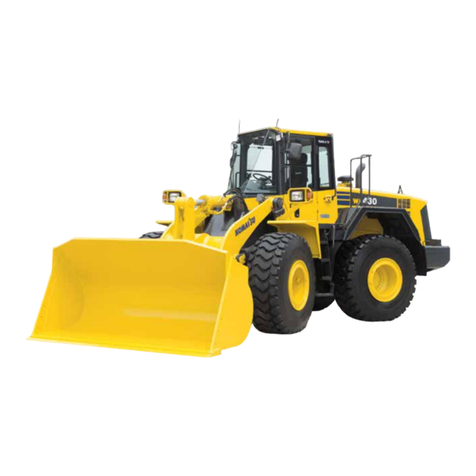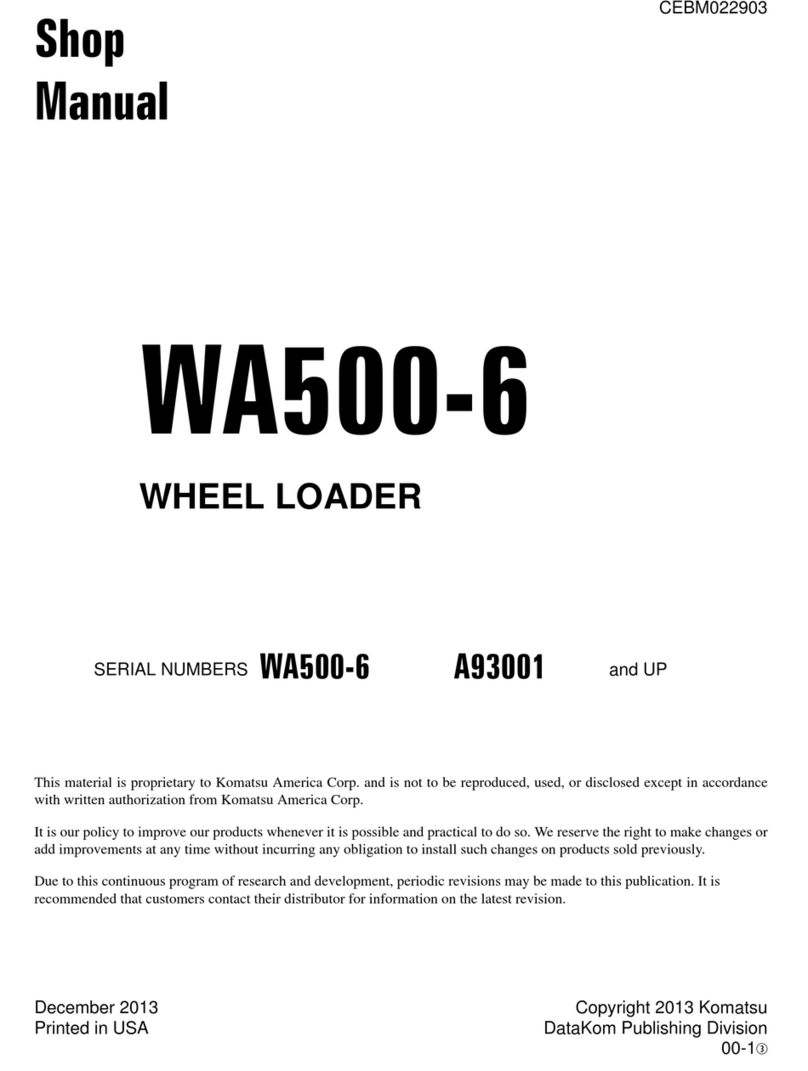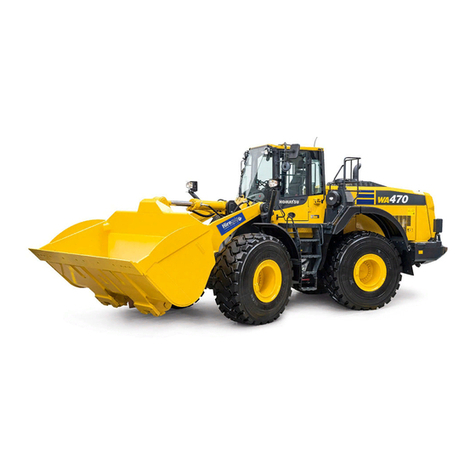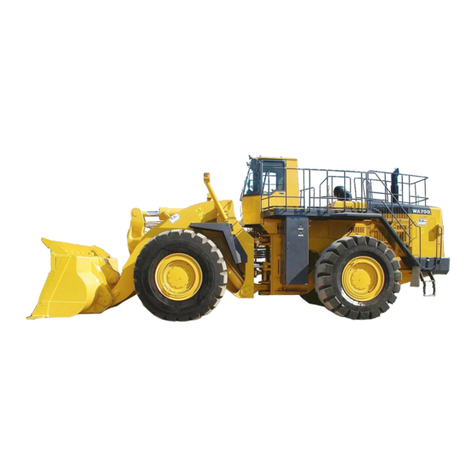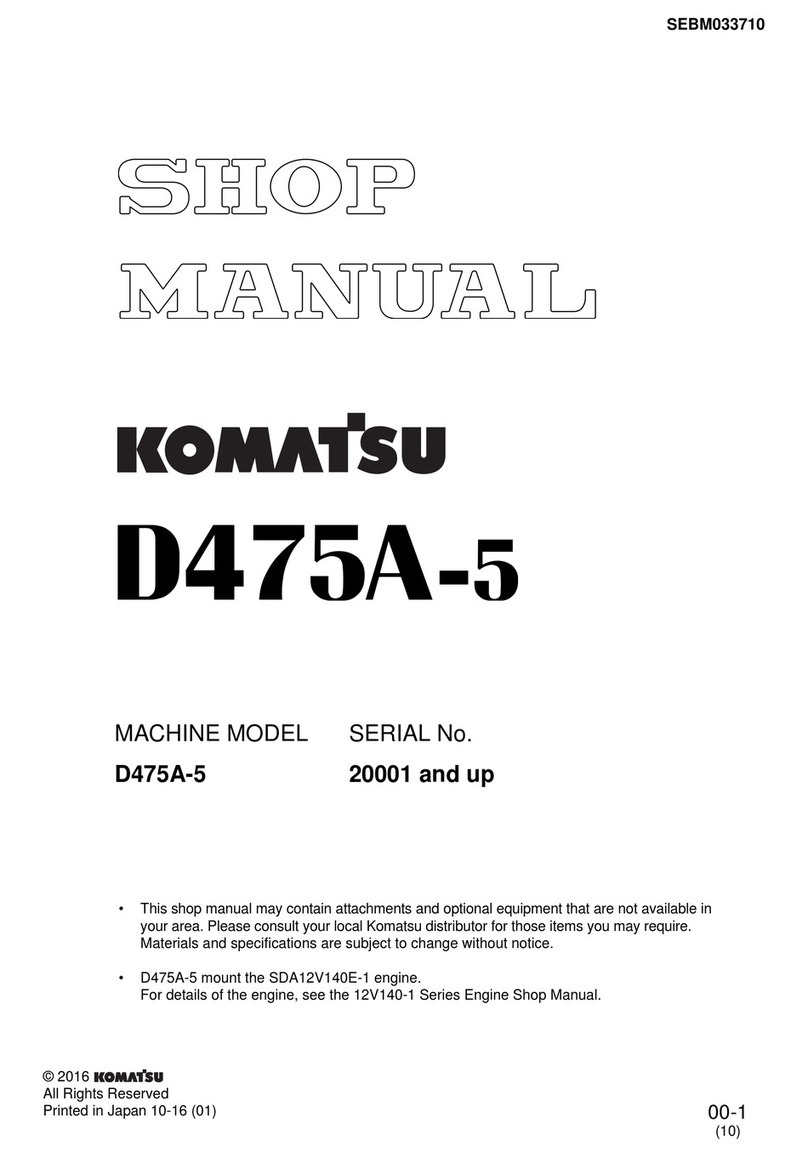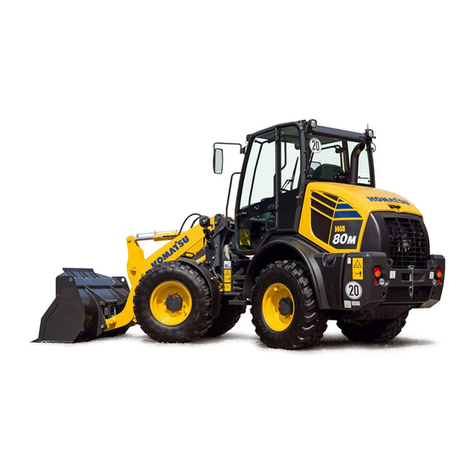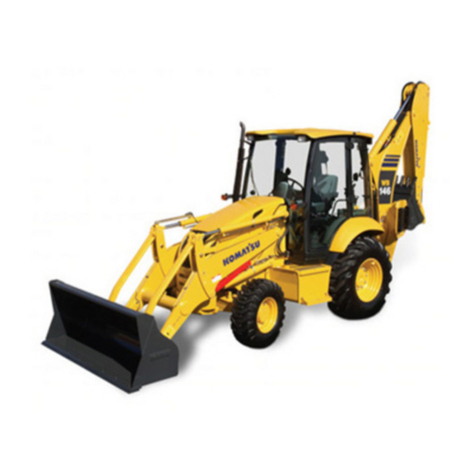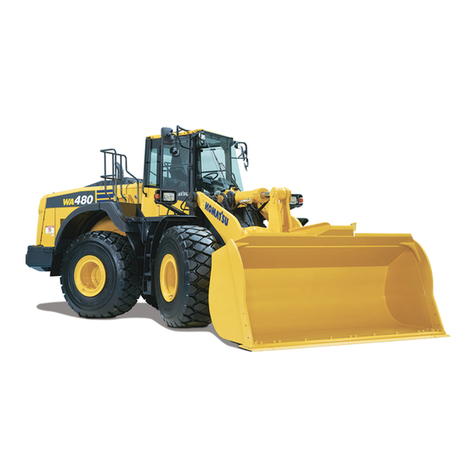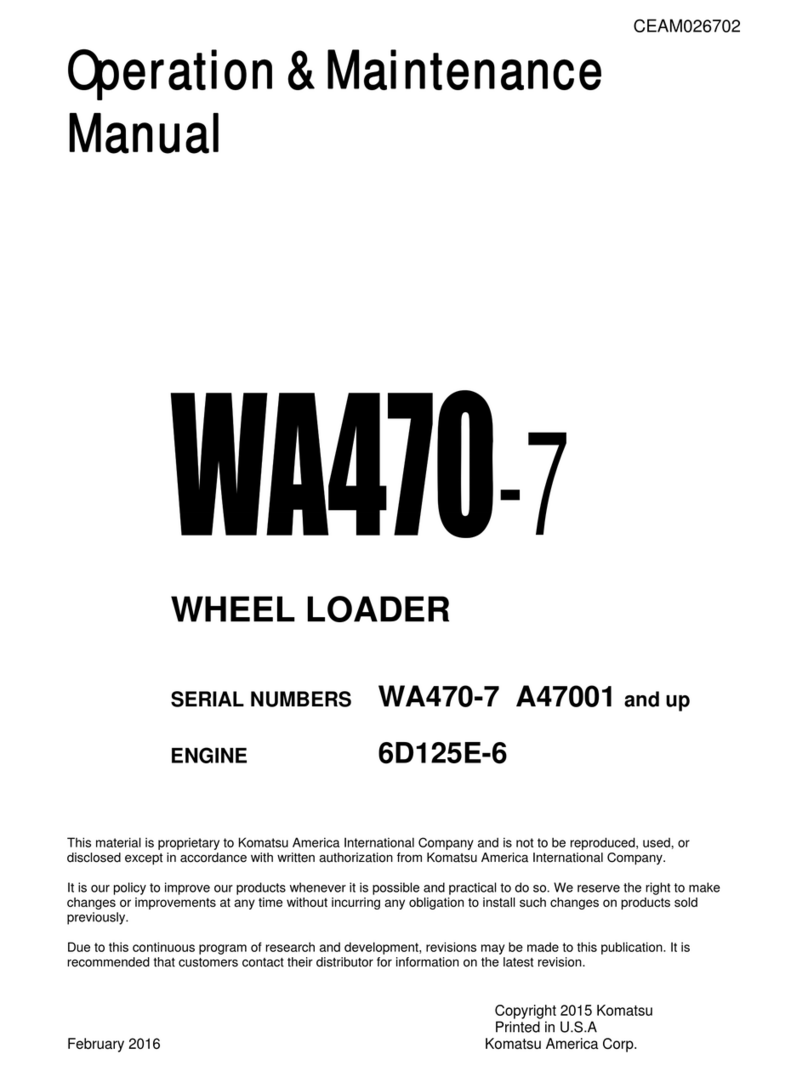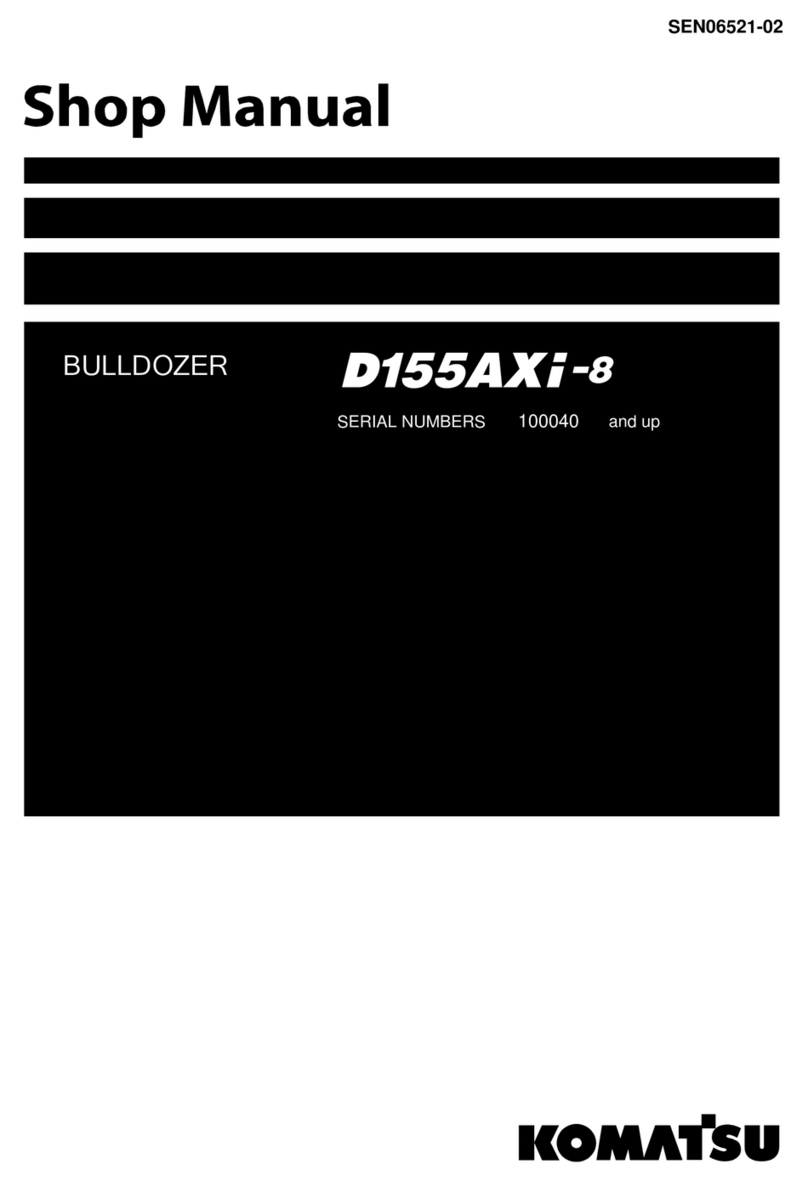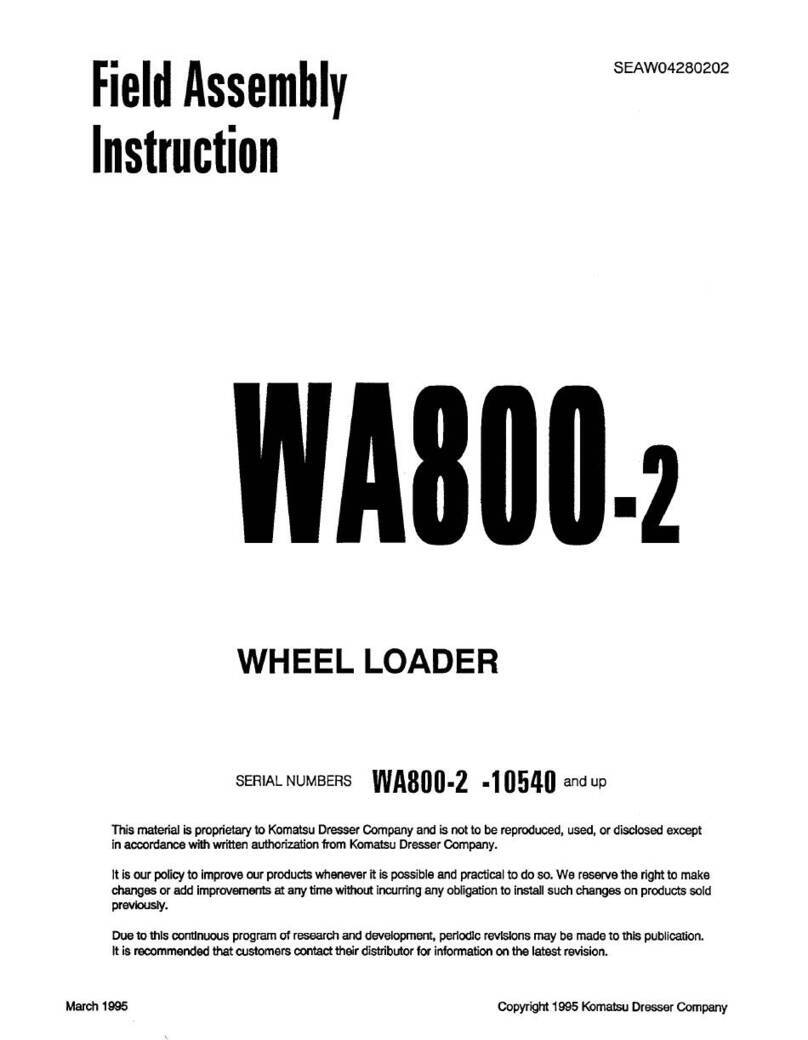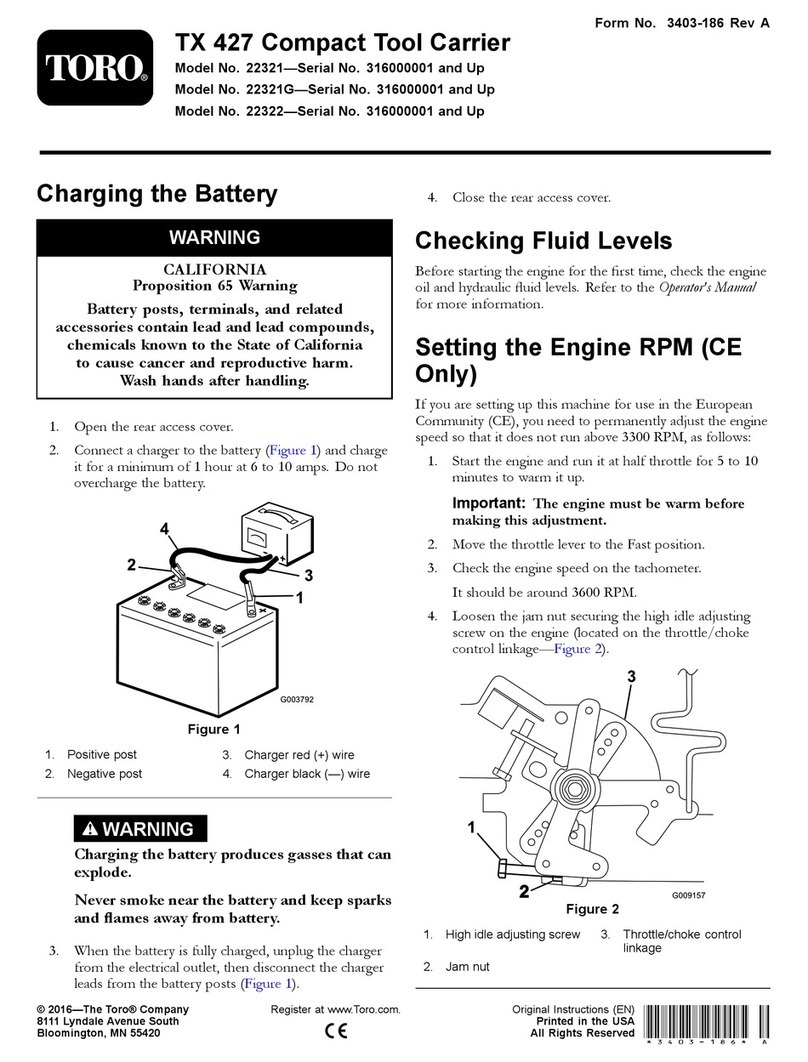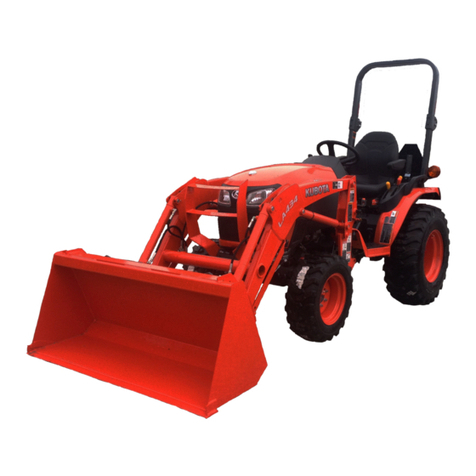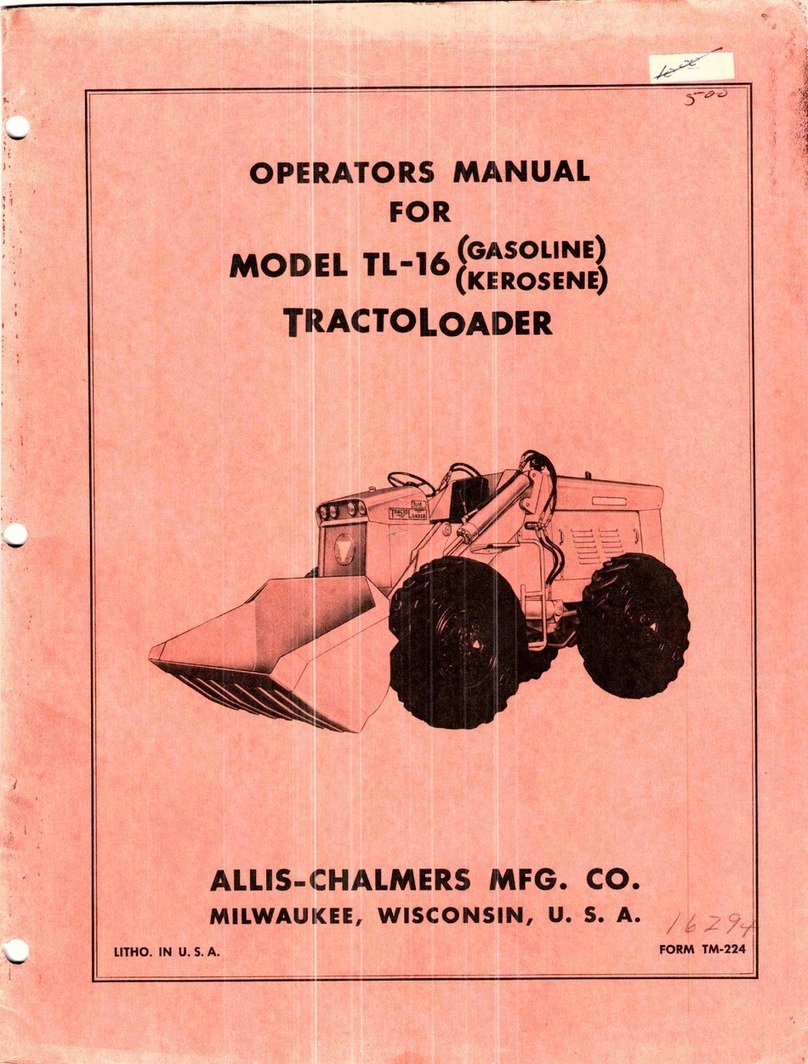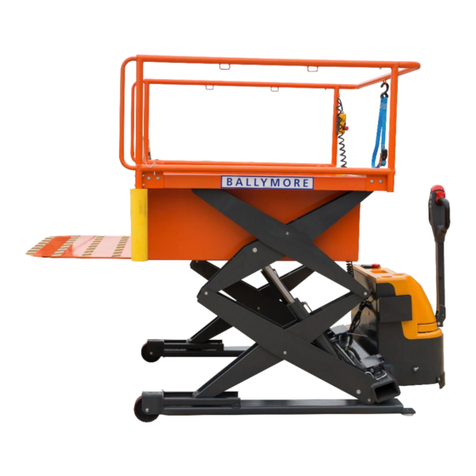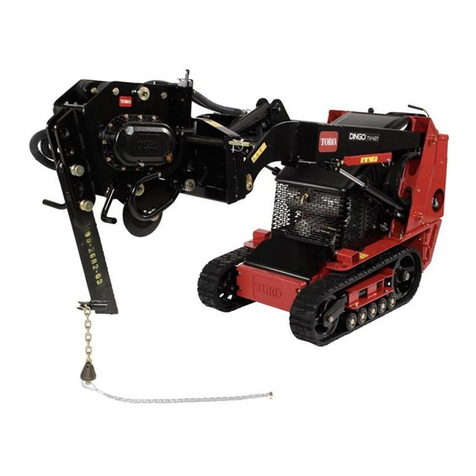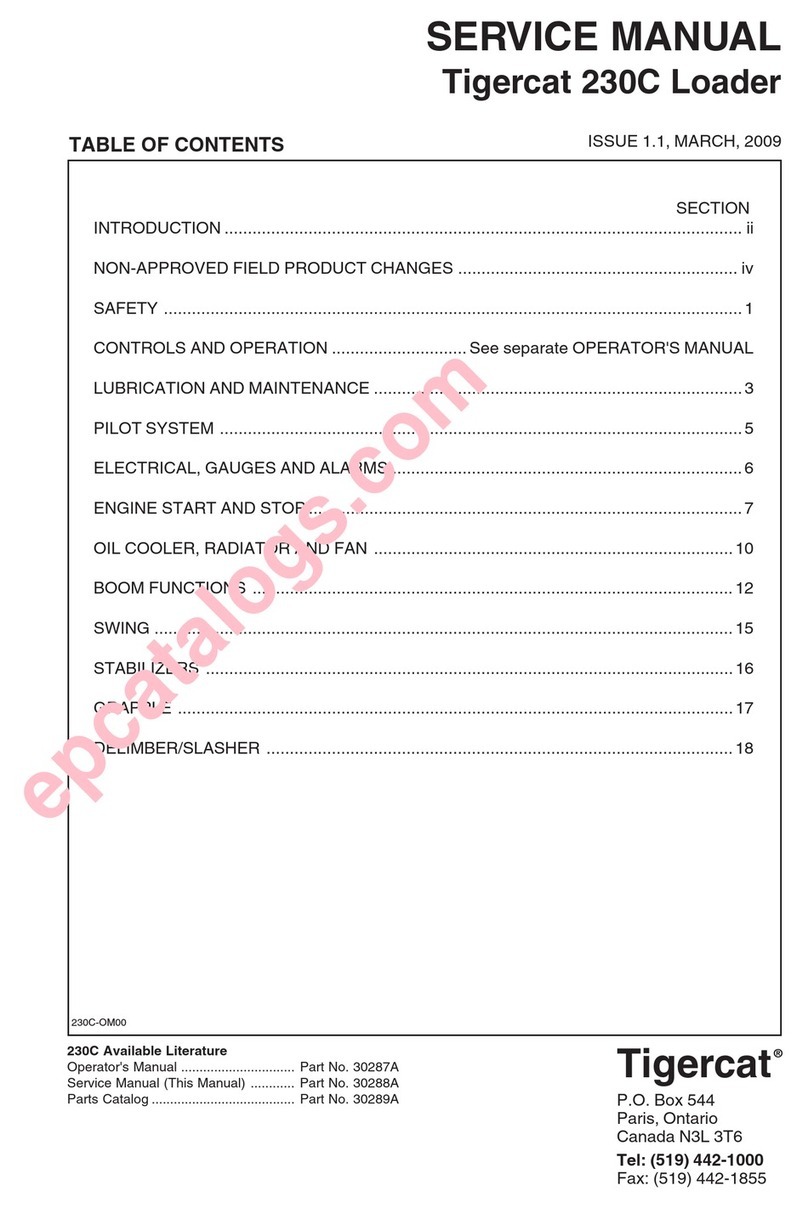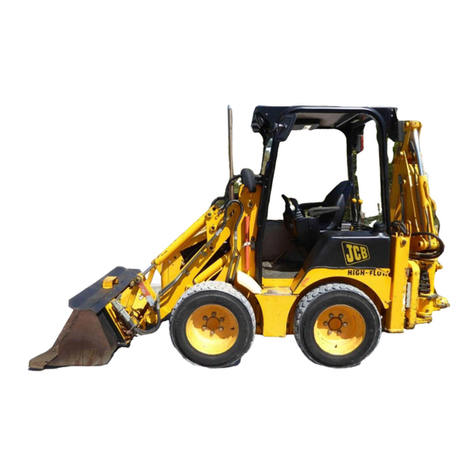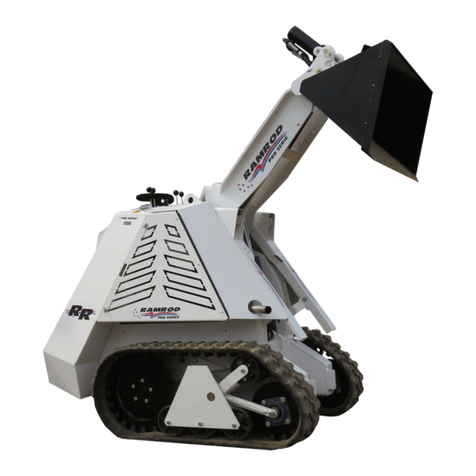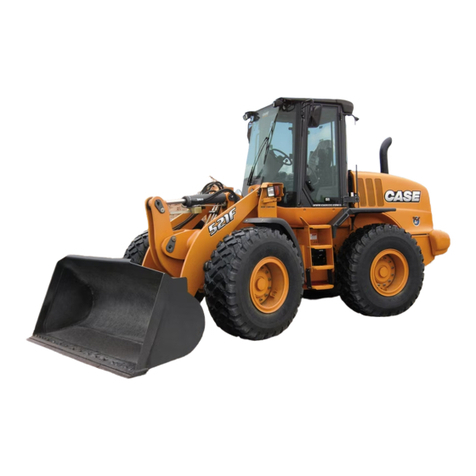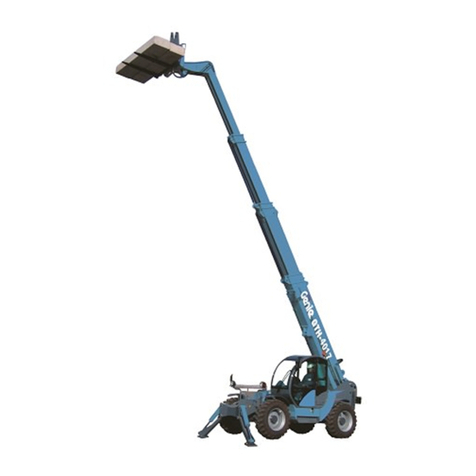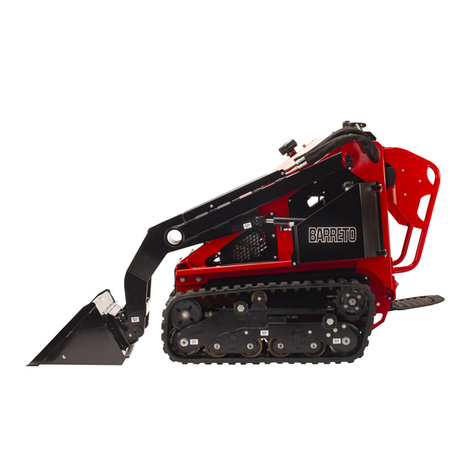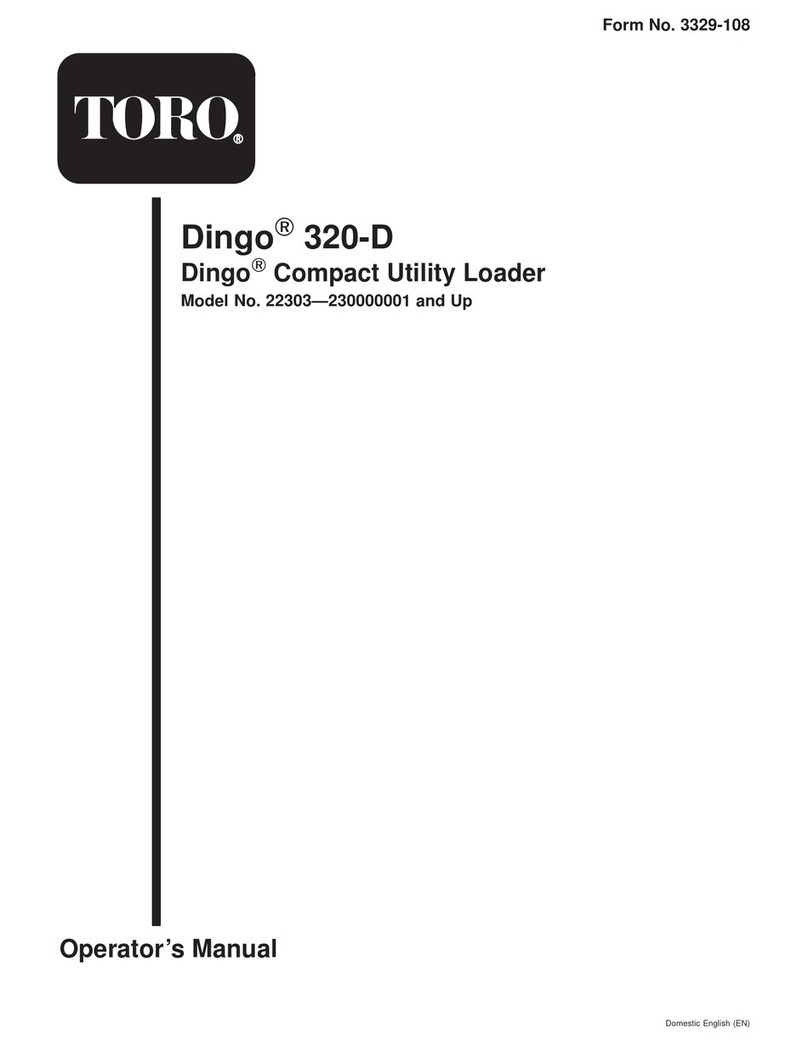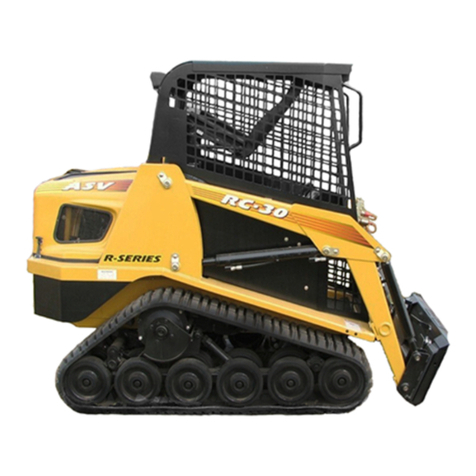
FOREWORD SAFETY
00-6 WA500-3H
12
4. When raising heavy components, use a hoist or crane.
Check that the wire rope, chains and hooks are free from
damage. Always use lifting equipment which has ample
capacity. Install the lifting equipment at the correct
places. Use a hoist or crane and operate slowly to pre-
vent the component from hitting any other part. Do not
work with any part still raised by the hoist or crane.
5. When removing covers which are under internal pres-
sure or under pressure from a spring, always leave two
bolts in position on opposite sides. Slowly release the
pressure, then slowly loosen the bolts to remove.
6. When removing components, be careful not to break or
damage the wiring, Damaged wiring may cause electri-
cal fires.
7. When removing piping, stop the fuel or oil from spilling
out. If any fuel or oil drips on to the floor, wipe it up
immediately. Fuel or oil on the floor can cause you to
slip, or can even start fires.
8. As a general rule, do not use gasoline to wash parts. In
particular, use only the minimum of gasoline when
washing electrical parts.
9. Be sure to assemble all parts again in their original
places. Replace any damaged part with new parts.
•When installing hoses and wires, be sure that they will
not be damaged by contact with other parts when the
machine is being operated.
10. When installing high pressure hoses, make sure that
they are not twisted. Damaged tubes are dangerous, so
be extremely careful when installing tubes for high pres-
sure circuits. Also check that connecting parts are cor-
rectly installed.
11. When assembling or installing parts, always use the
specified tightening torques. When installing protective
parts such as guards, or parts which vibrate violently or
rotate at high speed, be particularly careful to check that
they are installed correctly.
12. When aligning two holes, never insert your fingers or
hand. Be careful not to get your fingers caught in a hole.
13. When measuring hydraulic pressure, check that the
measuring tool is correctly assembled before taking any
measurements.
14. Take care when removing or installing the tracks of
track-type machines. When removing the track, the
track separates suddenly, so never let anyone stand at
either end of the track.
